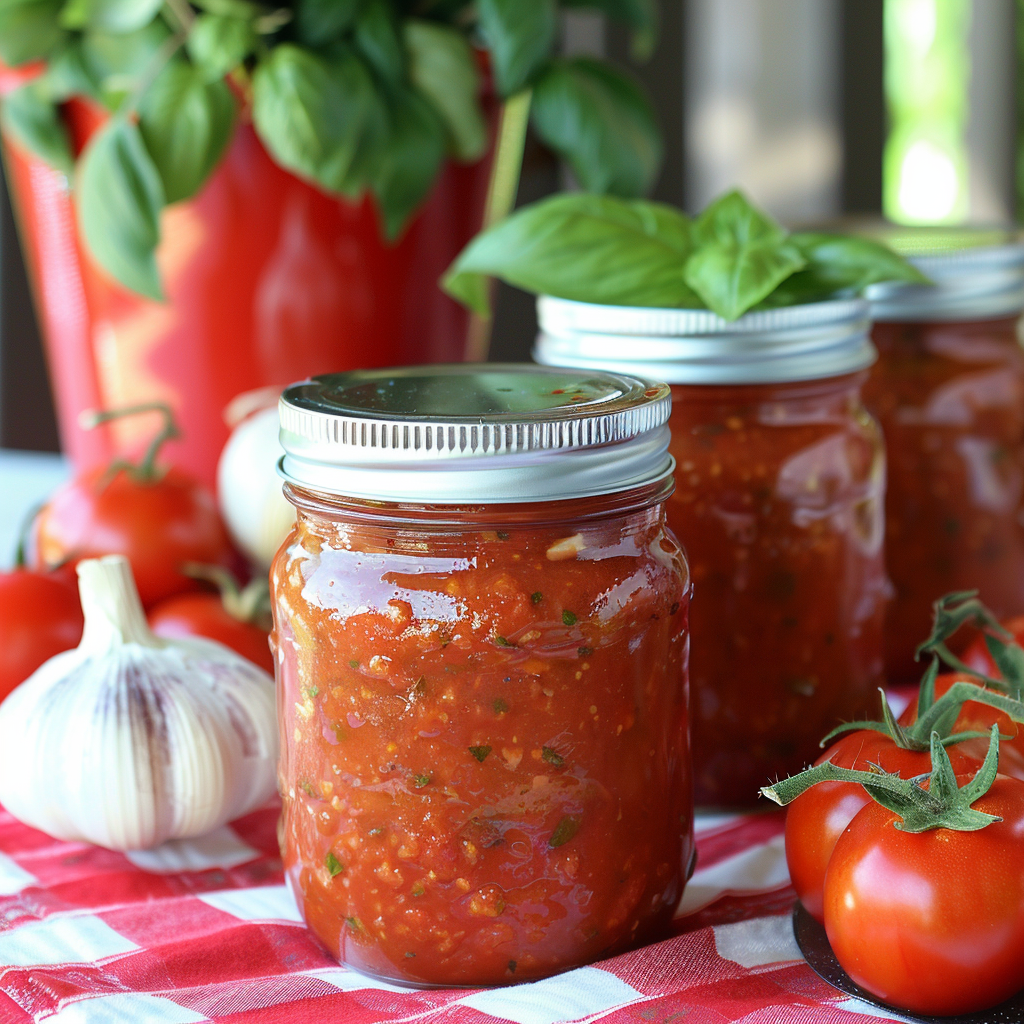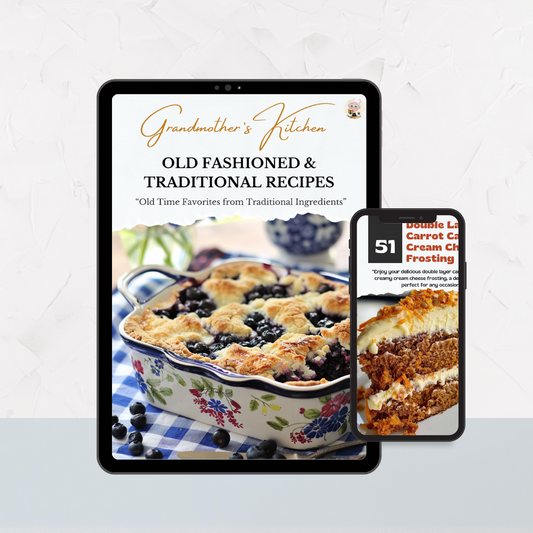How to Make Tomato Sauce at Home: A Step-by-Step Guide for Canning and Freezing

Share
Making Tomato Sauce Preserves Flavors
I’ve always found great joy in growing tomatoes, whether it's just one plant or an entire garden full of them. There’s something incredibly rewarding about picking a sun-warmed tomato right off the vine and enjoying it outside, surrounded by the greenery of the garden. This love for gardening has been passed down through generations in my family. It’s not just about the harvest; it’s about the connection to the earth, the satisfaction of growing your own food, and the simple pleasure of nurturing plants. One of the best ways to savor the taste of homegrown tomatoes year-round is by making tomato sauce.
Did You Know?
Tomatoes, originally native to western South America, were first cultivated by the Aztecs and Incas as early as 700 AD. Despite being botanically classified as a fruit, they are legally defined as a vegetable in the United States following an 1893 Supreme Court ruling for taxation purposes. Tomatoes come in various colors, including red, yellow, orange, green, and even purple. Rich in vitamins A and C, tomatoes also contain lycopene, an antioxidant linked to numerous health benefits, including reduced risk of heart disease and cancer. The world's heaviest tomato, weighing 10 pounds 12 ounces, was grown in Oklahoma in 1986.
Yield: 6-7 quarts
Ingredients:
- 20 pounds tomatoes
- 2 tablespoons pickling salt
- 1/4 cup lemon juice (bottled)
Optional Add-ins:
- 2 cups chopped onions
- 4 cloves garlic, minced
- 1/4 cup chopped fresh basil
- 2 tablespoons chopped fresh oregano
- 1/4 cup chopped fresh parsley
Instructions:
1. Prepare the Jars:
- Sterilize Jars: Wash jars, lids, and bands in hot, soapy water. Rinse well. Place jars in a large pot, cover with water, and boil for 10 minutes. Keep jars hot until ready to use.
- Prepare Lids: Heat lids in simmering water (not boiling) until ready for use. Do not boil. Set bands aside.
2. Prepare the Tomatoes:
- Blanch and Peel: Bring a large pot of water to a boil. Cut an "X" on the bottom of each tomato. Blanch tomatoes in boiling water for 30-60 seconds, then transfer to ice water. Peel off skins.
- Core and Chop: Remove cores from tomatoes. Chop tomatoes and set aside.
3. Cook the Sauce:
- Basic Sauce: In a large pot, combine chopped tomatoes and salt. Bring to a boil, then reduce heat and simmer, uncovered, for 45-60 minutes, stirring occasionally until thickened.
- Enhanced Sauce: For added flavor, sauté chopped onions and garlic in a bit of olive oil until translucent. Add to the simmering tomatoes along with chopped herbs.
4. Pack the Jars:
- Pack Sauce: Ladle hot tomato sauce into hot jars, leaving 1/2-inch headspace. Add 2 tablespoons of lemon juice per quart jar (1 tablespoon for pint jars) to ensure proper acidity.
- Remove Air Bubbles: Run a non-metallic spatula around the inside of the jar to remove air bubbles.
5. Process the Jars:
- Wipe Rims and Apply Lids: Wipe jar rims with a clean, damp cloth. Apply lids and screw bands until fingertip tight.
- Boiling Water Bath: Place jars in a boiling water canner. Ensure they are covered by at least 1-2 inches of water. Process for 35 minutes for pints or 40 minutes for quarts.
6. Cool and Store:
- Cool Jars: Remove jars and place them on a towel to cool for 12-24 hours. Do not disturb while cooling.
- Check Seals: After cooling, check seals. Lids should not flex up and down when pressed. Store in a cool, dark place for up to a year.
Freezer Method:
- Prepare Sauce: Follow the same steps for cooking the sauce.
- Cool and Pack: Let sauce cool completely, then pack into freezer-safe containers, leaving 1/2-inch headspace.
- Freeze: Store in the freezer for up to 6 months.
Nutritional Information (Per Serving - 1 cup of tomato sauce):
Calories: 70, Protein: 3g, Carbohydrates: 16g, Fat: 0g, Sugars: 10gKitchen Tips, Great Ideas, How to Save Money:
Choose the Right Tomatoes: Use Roma or plum tomatoes for sauce. They have fewer seeds and thicker flesh, making them ideal for a rich sauce.
Blanching Tips: To make peeling easier, ensure the water is at a rolling boil before adding tomatoes. Blanch in small batches to maintain water temperature.
Sterilization is Key: Always sterilize jars and lids to prevent contamination and ensure a long shelf life.
Acidity Matters: Adding lemon juice or citric acid is crucial for safe canning. It increases the acidity, which prevents the growth of harmful bacteria.
Salt for Flavor: Use pickling salt or sea salt to enhance the flavor without adding unwanted additives.
Headspace is Important: Leave the correct amount of headspace to allow for expansion during processing and to ensure a proper seal.
Remove Air Bubbles: Removing air bubbles prevents trapped air, which can lead to spoilage. Use a non-metallic utensil to avoid damaging jars.
Proper Sealing: Do not over-tighten lids. Fingertip tight is sufficient, allowing air to escape during processing.
Storage Conditions: Store canned sauce in a cool, dark place to maintain quality and prevent spoilage. Avoid storing near heat sources or in direct sunlight.
Labeling Jars: Always label jars with the date and contents. This helps keep track of inventory and ensures you use older jars first.
So, What Tomatoes Should I Choose To Make My Sauce?
When it comes to making tomato sauce, not all tomatoes are created equal. Here are three of the best types of tomatoes for sauce-making:
Roma Tomatoes: Roma tomatoes are the classic choice for making sauce. They have dense flesh, fewer seeds, and a lower moisture content, which means you can achieve a thick, rich sauce without needing to cook off excess liquid.
San Marzano Tomatoes: Often hailed as the best tomato for sauce, San Marzano tomatoes are a type of plum tomato grown in the volcanic soil of Italy. They are sweeter, less acidic, and have a thicker flesh, making them perfect for creating a smooth, flavorful sauce.
Amish Paste Tomatoes: Another excellent choice, Amish Paste tomatoes are known for their sweet flavor and meaty texture. They’re larger than Romas but still have fewer seeds and a lower water content, which helps in making a hearty, thick sauce.


